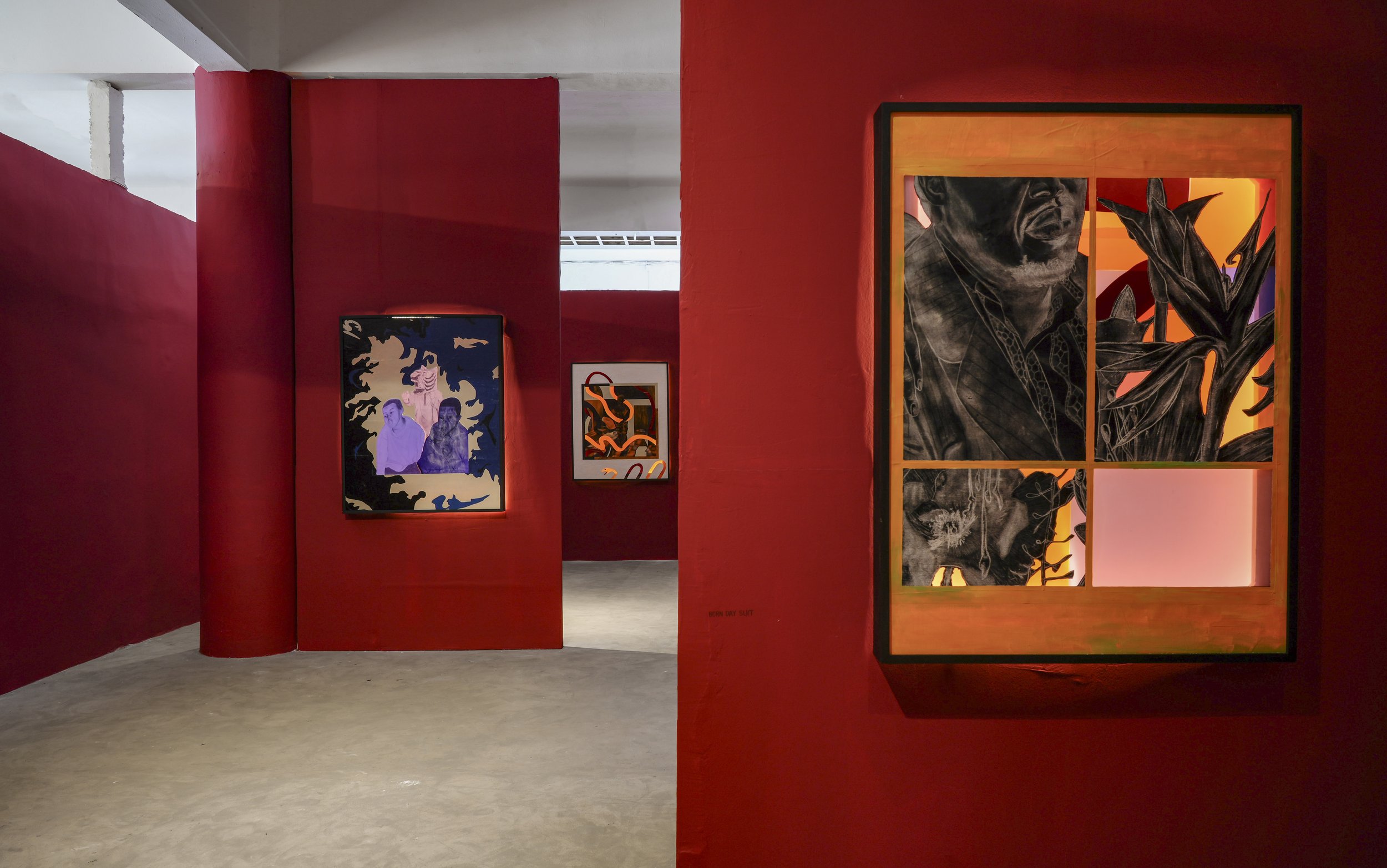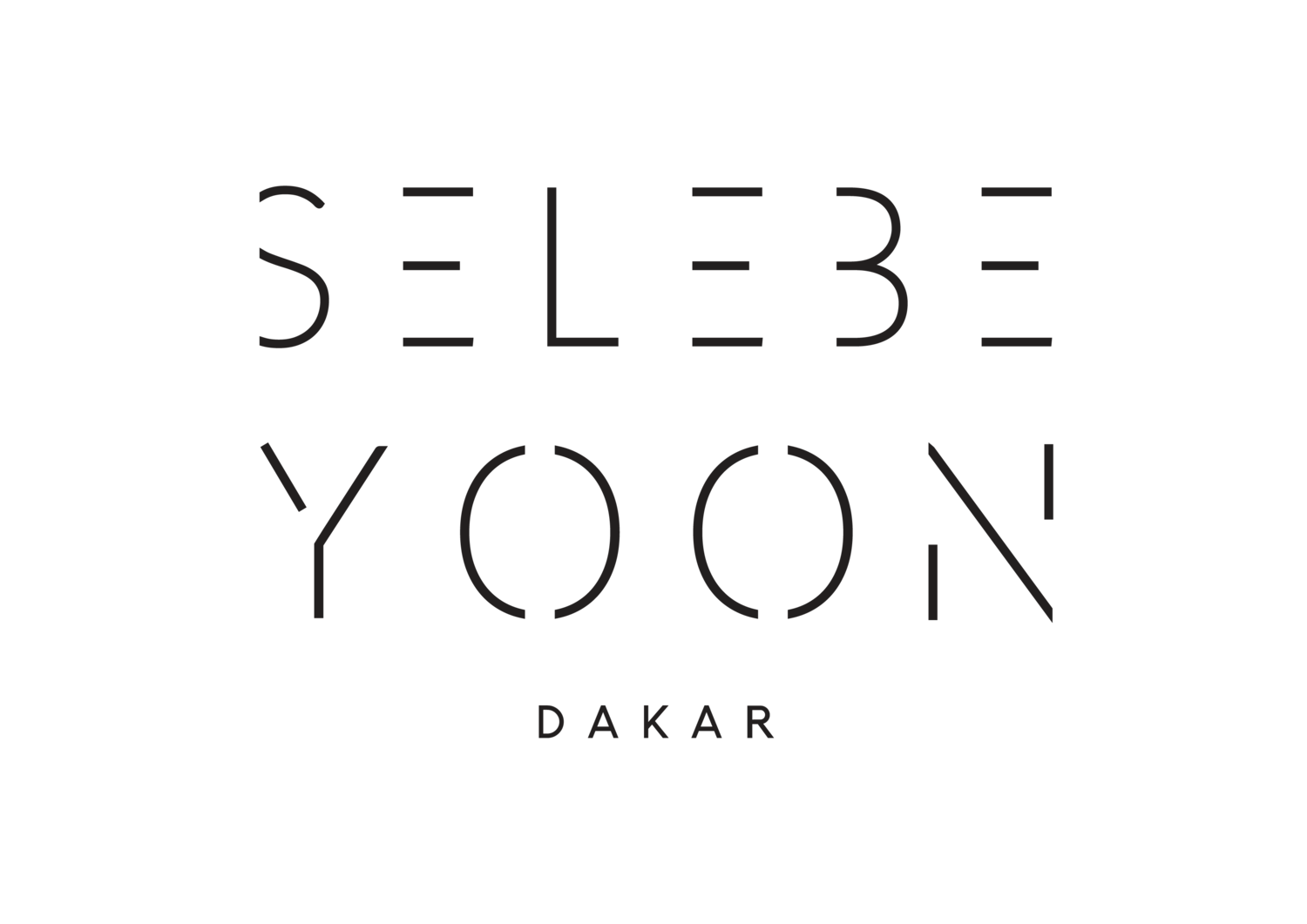
08 November- 22 February 2025
Ibrahim Cissé
People come end ghost
People come end ghost
Marked by the power of childhood memories, Ibrahim Cissé's new works plunge the viewer into an old family album, questioning photography as a witness to the transcontinental trajectories of the African diaspora. "For Africans who migrated abroad, these photographs were the only visual means of telling their stories or announcing a birth to their families back home," he says. What do the images not say about reality? In his compositions - or rather recompositions - of intimate scenes, Cissé addresses the experience of disappearance, grief and the desynchronisation of family ties caused by separation.
At Selebe Yoon, light boxes bathed in coloured light reveal scenes and portraits of the artist's family. Through cutting and collage, his compositions, defined by geometric divisions and vignettes, borrow from the language of ancient Persian miniatures, while the transparency and luminosity of the works recall the art of stained glass, historically associated with the embellishment of religious monuments. The artist's technique consists of redrawing elements taken from the same photographs and transferring them to vinyl paper before manipulating them and the canvas with paint. Resembling photographic negatives or medical X-rays, the scenes are transformed, repeated and recomposed in a psychic, almost absurd space, between the memory of lived experience and the deliberate distortion of the past.
Questioning the mysterious alliance of determinism and contingency in the course of a life, the artist highlights key moments in his own family history, such as his birth, his mother's departure from Gambia to France, the death of his father, followed by that of his younger brother, who was overcome by a blood disease. These moments are linked in his memory to a few indescribable visions or impressions, manifested in a bouquet of flowers offered at a funeral or the solitude of his mother sitting at the table in her living room. The repetition of images reinforces the tenacity of unshakable memories, while some of the portraits are based on images taken over the course of a lifetime.
In a general reflection on collective memory and the archetypes described by the psychoanalyst Carl Gustav Jung, the works are punctuated by the presence of an allegorical bestiary that inserts itself into scenes of family intimacy or personal and symbolic objects. "People come end ghost" (2024) is a portrait of his younger brother as a child, surrounded by a snake, a fetish animal from ancient mythology and a fundamental figure in many religions. The animal's amorphous body, as fluid as that of blood vessels, seems to trap the child's body, alluding to the insidious and slow nature of certain blood diseases. In ancient Greece, the serpent symbolised the guardian spirit, offering another interpretation of the scene immortalised by the artist.
The result of the exhibitions is akin to a lullaby haunted by shadows, the world of childhood disturbed by ghosts, where animal allegories unite with the human.
Although these works are based on private images, Ibrahim Cissé invites us to reflect on the fine line between personal and collective memory, the role of the photographic image in filling absences and telling stories, and the function of the imagination in the face of loss.
Artist biography
Influenced by scientific theories, poetry and mysticism in ancient literary work, Ibrahim Cissé weaves threads out of seemingly disparate and geographically distant narratives to question transcontinental experiences of the diaspora. From collage, photography and video, his practice oscillate between visual art, writing and performance, borrowing from fiction to enhance the social and historical framings of his works.
Ibrahim graduated with an MA in Curating Contemporary Art from the Royal College of Art, London, United Kingdom in 2018. His work has been included in group exhibitions such as « Luma Rencontres Arles », Arles, France (2023); 20/20 Photo Festival » at Wanderlife Gallery, Philadelphia, USA (2022); « Red Mansion Prize », at the Royal Academy of Arts, London, UK (2019) to name a few.
In addition, his sound and video works were presented on several occasions: « Diaspora Pavillon » at the International Curators Forum (2022); « Seismic Wave », OF Gallery, Seoul, South Korea (2020); « The Artist Dining Room | Faith Ringgold » at Yinka Shonibare Studio, London, UK (2019); « Poetry in Translation », Ball House, Beijing, China (2018); « Who Cares? A radio tale », Gasworks & Resonance 104.4FM London, UK (2018).
He was awarded The Red Mansion Prize in from The Red Mansion Foundation in Beijing, China (2018). His book “Could be the last” was shortlisted for Luma Arles Foundation Dummy Awards (2023).
He participated in several residencies namely “Transforming Art Ecologies” at New Art Exchange, UK/ Tahannaout, Morocco (2021) and another one at Wysing Art Center, Cambridge, UK (2018). He was one of the selected alumni in the Raw Academy Session 9 organised by Raw Material Academy at ICA, Philadelphia, USA (2022).
In 2017, he set up an independent publishing house: ‘Lost in Time Publishing’ a platform dedicated to visual arts, poetry and literature, from the African continent and its diaspora.
Ibrahim Cissé has participated in a number of educational projects, including at The Gambia's Institute of Tourism, Arts and Culture (2023) and the Sandberg Instituut in the Netherlands (2017-2022). He has been invited to give lectures and workshops at the following venues and universities such as Goldsmiths University (London, UK), UAL (London, UK), South London Gallery (London, UK), to name but a few.
He currently lives and works in Dakar, Senegal.











